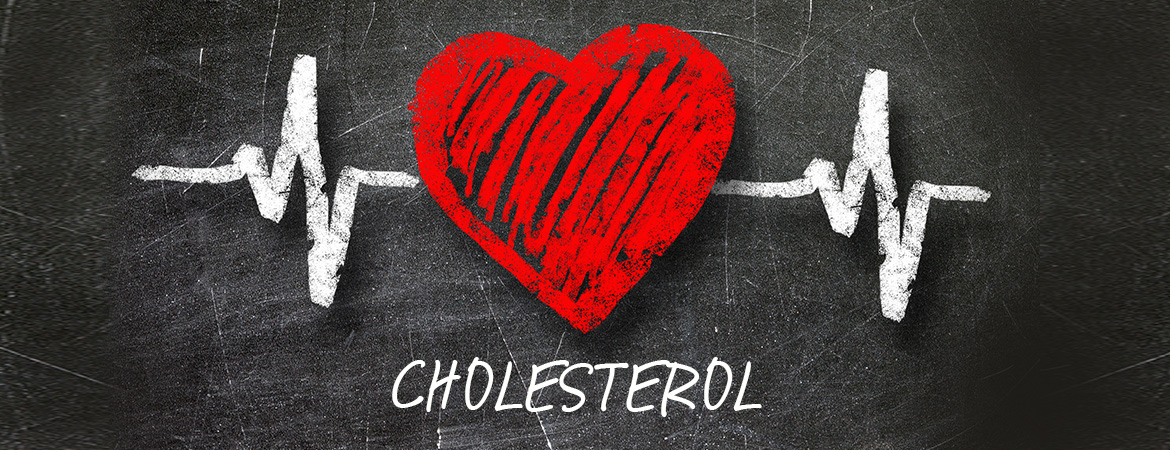What is "bad" and "good" cholesterol ?
Cholesterol
Cholesterol is a peculiar molecule. Frequently called lipid or fat, however, the chemical term for a molecule such as cholesterol is alcohol, although it does not behave like alcohol.
Numerous carbon and hydrogen atoms are assembled into a complex three-dimensional network, impossible to dissolve in the water.
This smartly designed grid integrates cholesterol into the cell walls to make the cells waterproof. This means that cells can regulate their internal environment without being disturbed by changes in their external environment.
It is a vital mechanism for proper cell function.
The fact that the cells are waterproof is particularly critical for the normal functioning of nerves, nerve cells, etc. Generally, the highest concentration of cholesterol in the body is found in the brain and other parts of the nervous system. Cholesterol is insoluble in water and therefore also in blood.
Therefore, it consists of fats or other lipids and proteins, so-called lipoproteins.
Lipoproteins
Lipoproteins are easily dissolved in water because their outer envelope consists mainly of water-soluble proteins, but their inner envelope consists of lipids, creating space for water-insoluble molecules such as cholesterol.
Lipoproteins function as endogenous transport vehicles, fluid environment, transferring cholesterol from one part of the body to another.
That's why we can compare them to "submarines"!"Underwater" or otherwise lipoproteins, have different names depending on their density.
The most well-known are HDL (high density lipoprotein) and LDL (low density lipoprotein).
The main task of HDL is to transfer cholesterol from the peripheral tissues, including the walls of the artery, to the liver. It is then excreted from the bile or used for other purposes, for example as a starting point for the production of significant hormones.
While LDL carries mainly cholesterol in the opposite direction. LDL is transported by the liver, where most of the body's cholesterol is produced in the peripheral tissues, including the vascular walls.
All cells can produce cholesterol, but if they need more than they are able to produce, they are looking for "underwater" LDL, which will then carry the extra cholesterol into the cells. The bulk of cholesterol in the blood, between 60 and 80%, is transported by LDL and is called "bad cholesterol".
Only 15-20% is transported by HDL and is called "good cholesterol".
In addition, a small portion of circulating cholesterol is transferred from other lipoproteins.
What is "Bad" and "Good" Cholesterol
The question is because a natural substance in our blood, with important biological functions, is called "bad" when transported from the liver to peripheral tissues with LDL and "good" when inverted with HDL.
The reason is, as several follow-up studies have shown, that:
a lower than normal HDL-cholesterol level and a higher than normal LDL-cholesterol level are associated with a higher risk of heart attack and vice versa.
a higher than normal HDL-cholesterol level and a lower than normal LDL-cholesterol are associated with a lower risk,
yet a low ratio of HDL / LDL is a risk factor for coronary artery disease.
However, a risk factor is not necessarily the same as the cause. Many factors are known to affect this ratio.
Something can cause a heart attack and at the same time reduce the HDL / LDL ratio.
Is it bad to be an obese, to smoke, to not exercise, to have high blood pressure and stress, or is it bad to have increased "bad" cholesterol or all together?
Is it good to be weak, not to smoke, to exercise, to keep his blood pressure on normal levels and to be emotionally calm, or is it good to have increased "good" cholesterol or all together?
In conclusion, the risk of heart attack is greater than normal for people with high cholesterol LDL, but also for obese people, smokers, those with hypertension or experiencing intense stress.
Of course, it is known that these individuals usually have elevated LDL cholesterol levels, but it is impossible to know whether the increased risk is due to the aforementioned risk factors or high LDL.
The calculation of the risk of high LDL, ignoring other risk factors, is called univariate analysis.
But to prove that high LDL is an independent risk factor, it is necessary to ask whether people are obese, smokers, have hypertension, and experience intense stress.
These individuals are at greater risk for coronary artery disease than they have low or normal LDL cholesterol.
By using complex statistical formulas, it is possible to make such comparisons in a population of individuals with different grades of risk factors and varying levels of LDL.
This is called multivariate analysis.
An analysis of the prognostic value of LDL cholesterol also takes into account body weight, then it is only considered to be adapted to it.
A major problem with such calculations is that the data generated by them and other complex statistical methods is almost impossible for most people, including most doctors, to understand.
For many years, researchers in this field have not presented primary data, simple meanings or simple correlations, but misty-meaning words, relative dangers, p-values, not to mention dark concepts, such as the standardized logic regression coefficient or the combined risk ratio.
Instead of being a science aid, statistics are used to impress people and cover the fact that scientific findings are insignificant and of no practical significance. In conclusion, a high LDL is not necessarily bad, and this is shown by many studies.
Indeed, in a recent post-analysis of 19 studies, where the authors watched nearly 70,000 people, after several periods, after measuring their LDL-cholesterol, it was observed that those with the highest LDL values lived for the longest time, even more, than those who were treated with statins.


